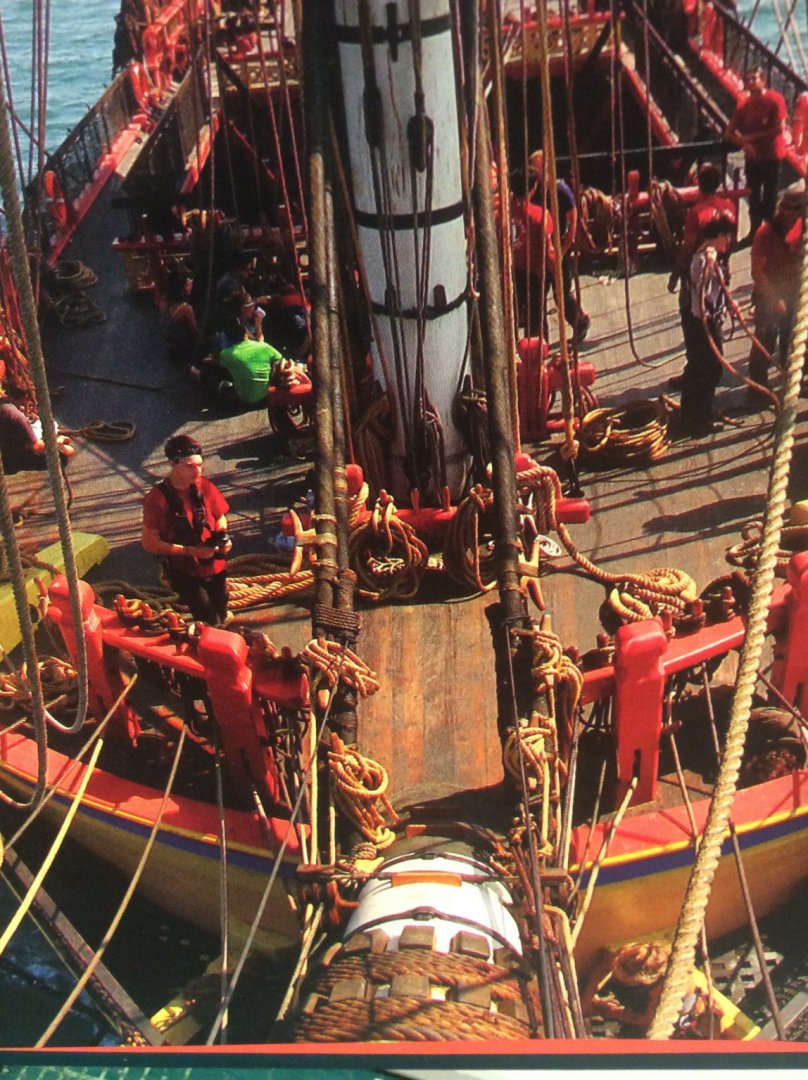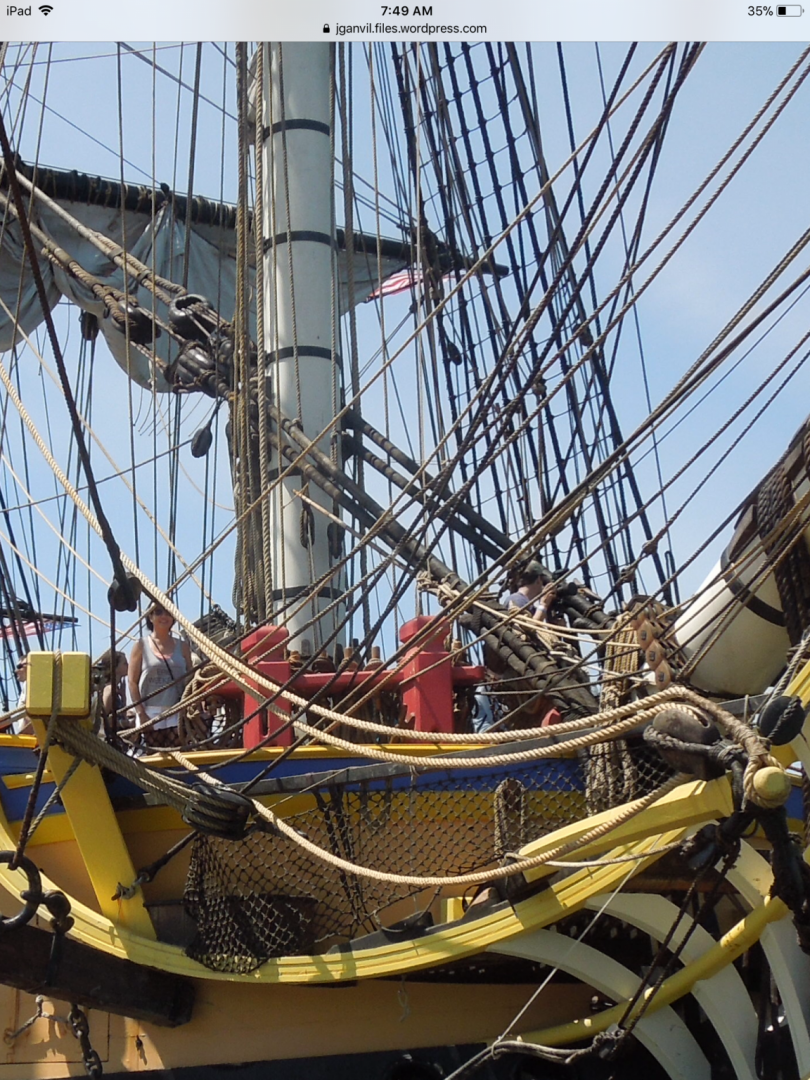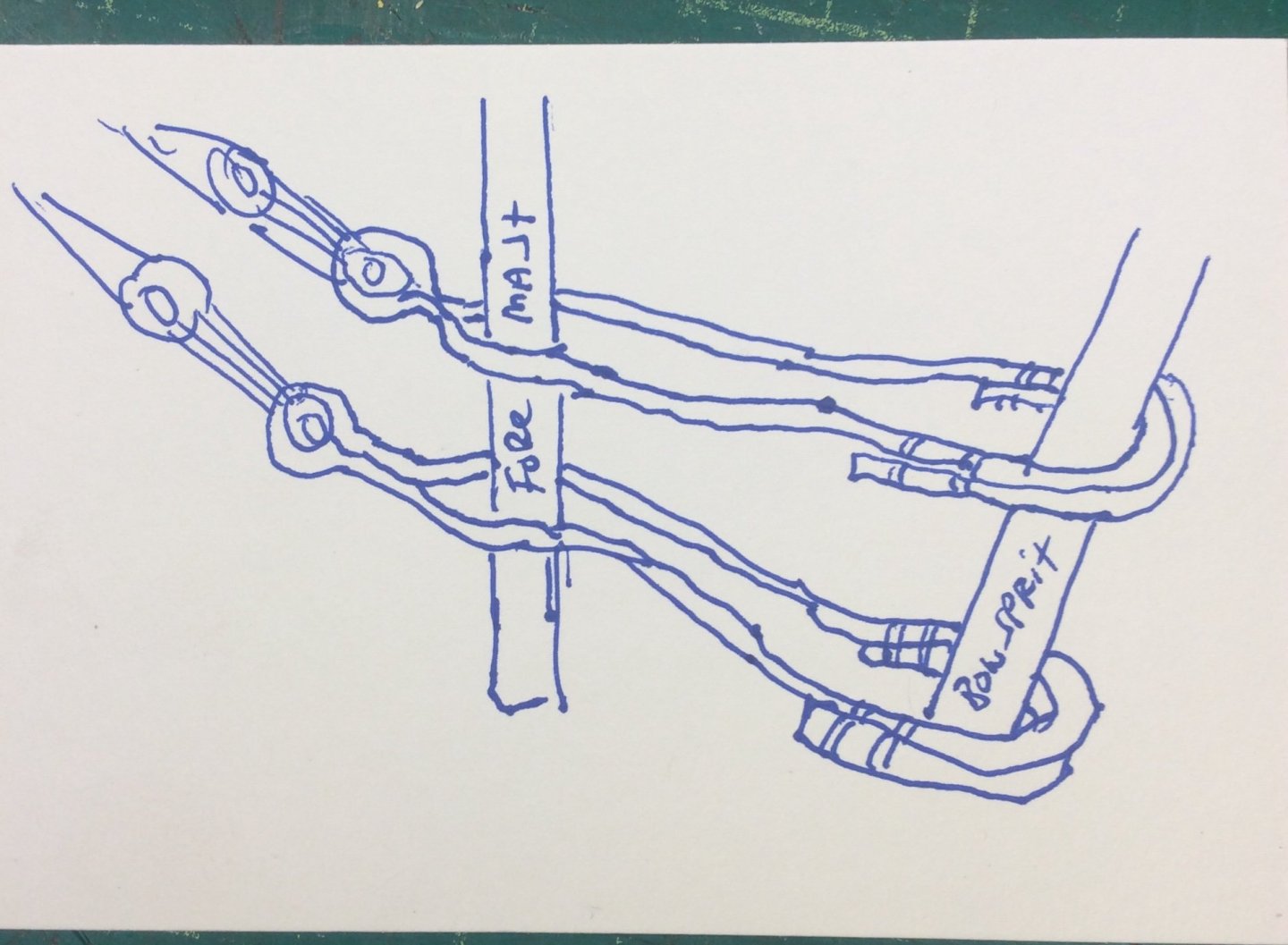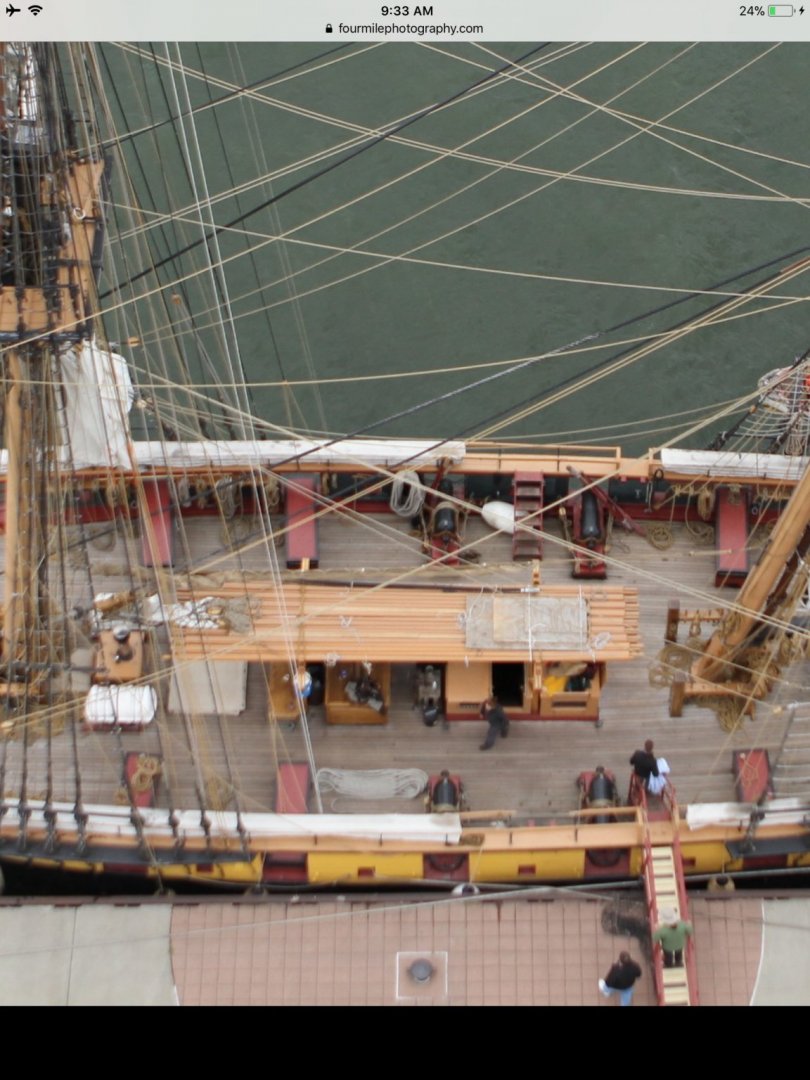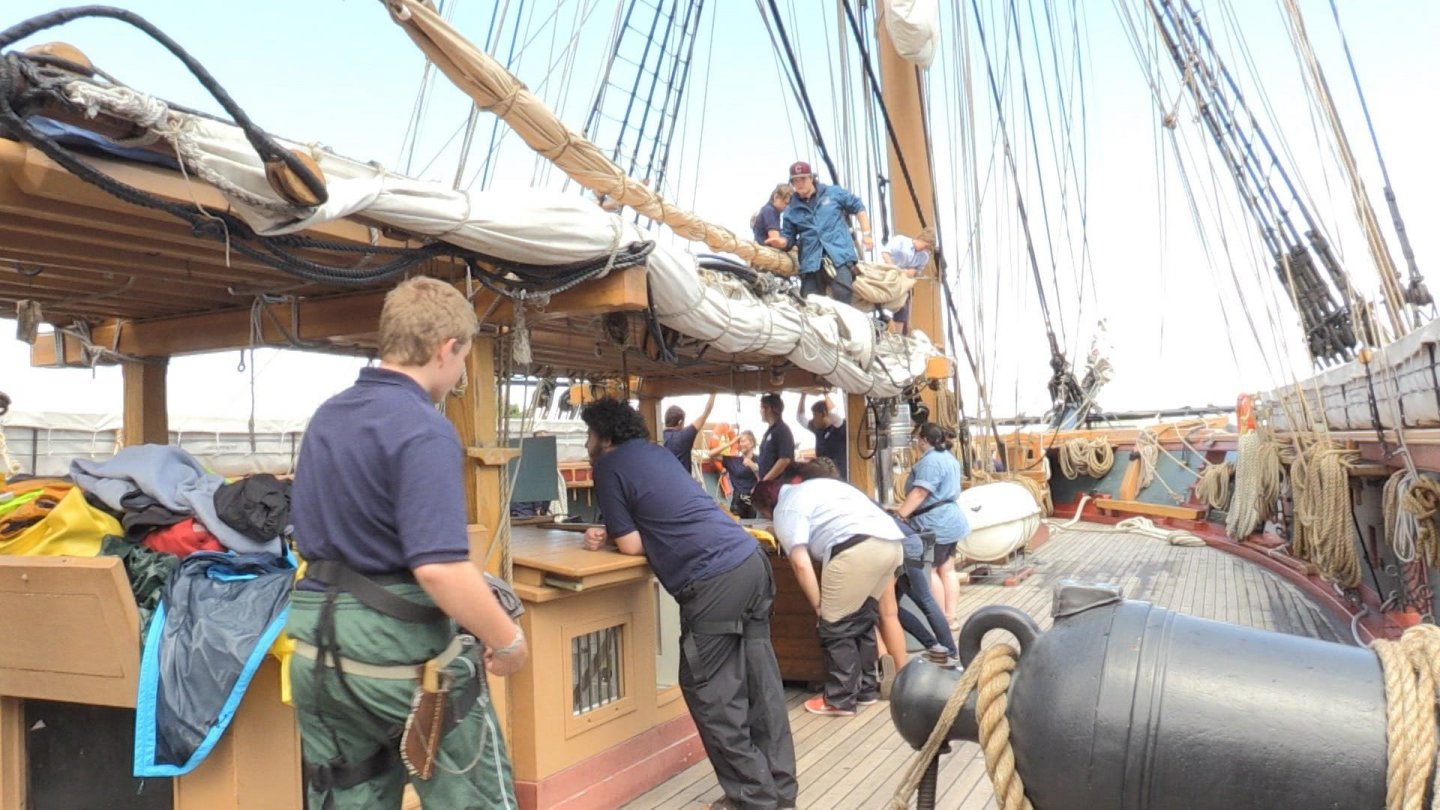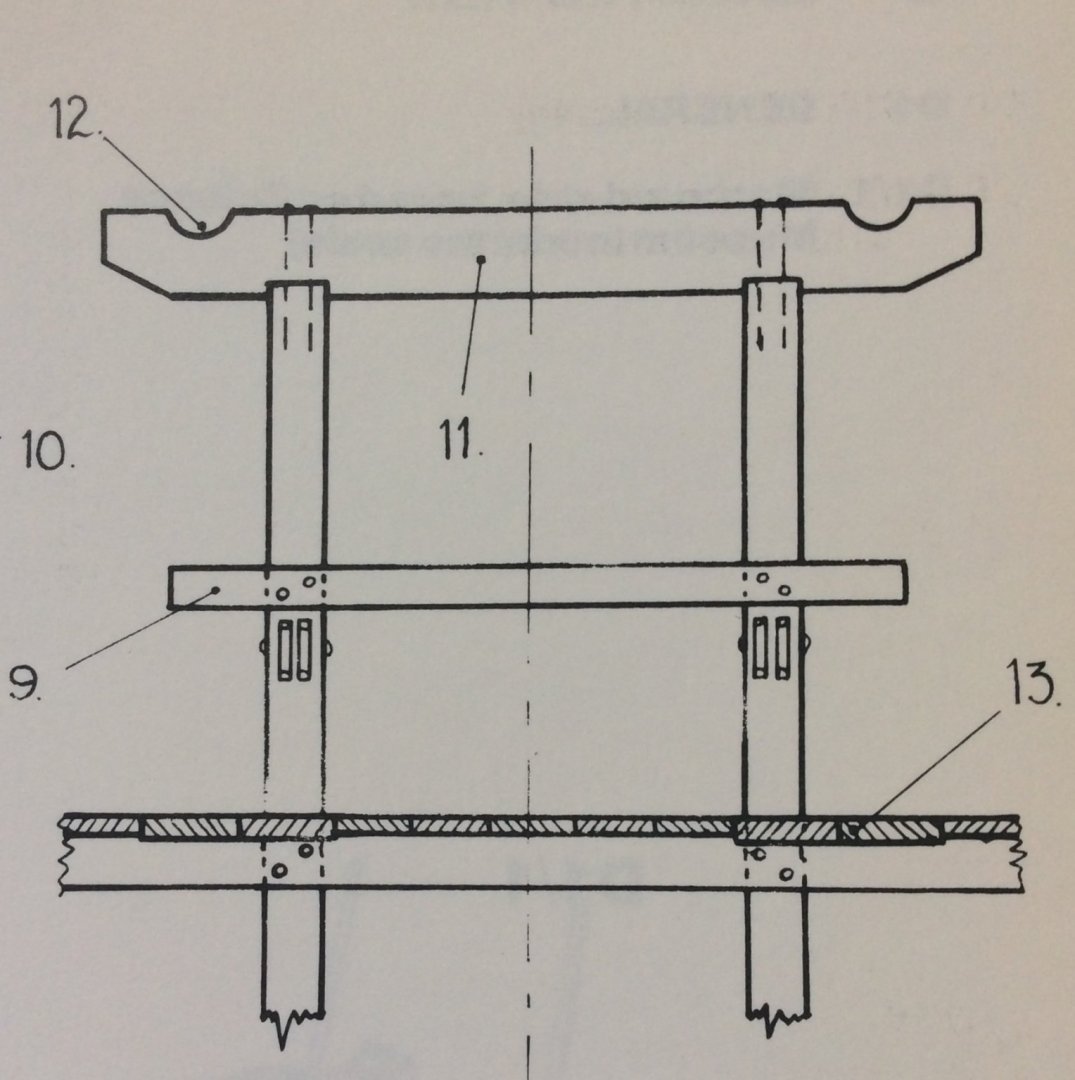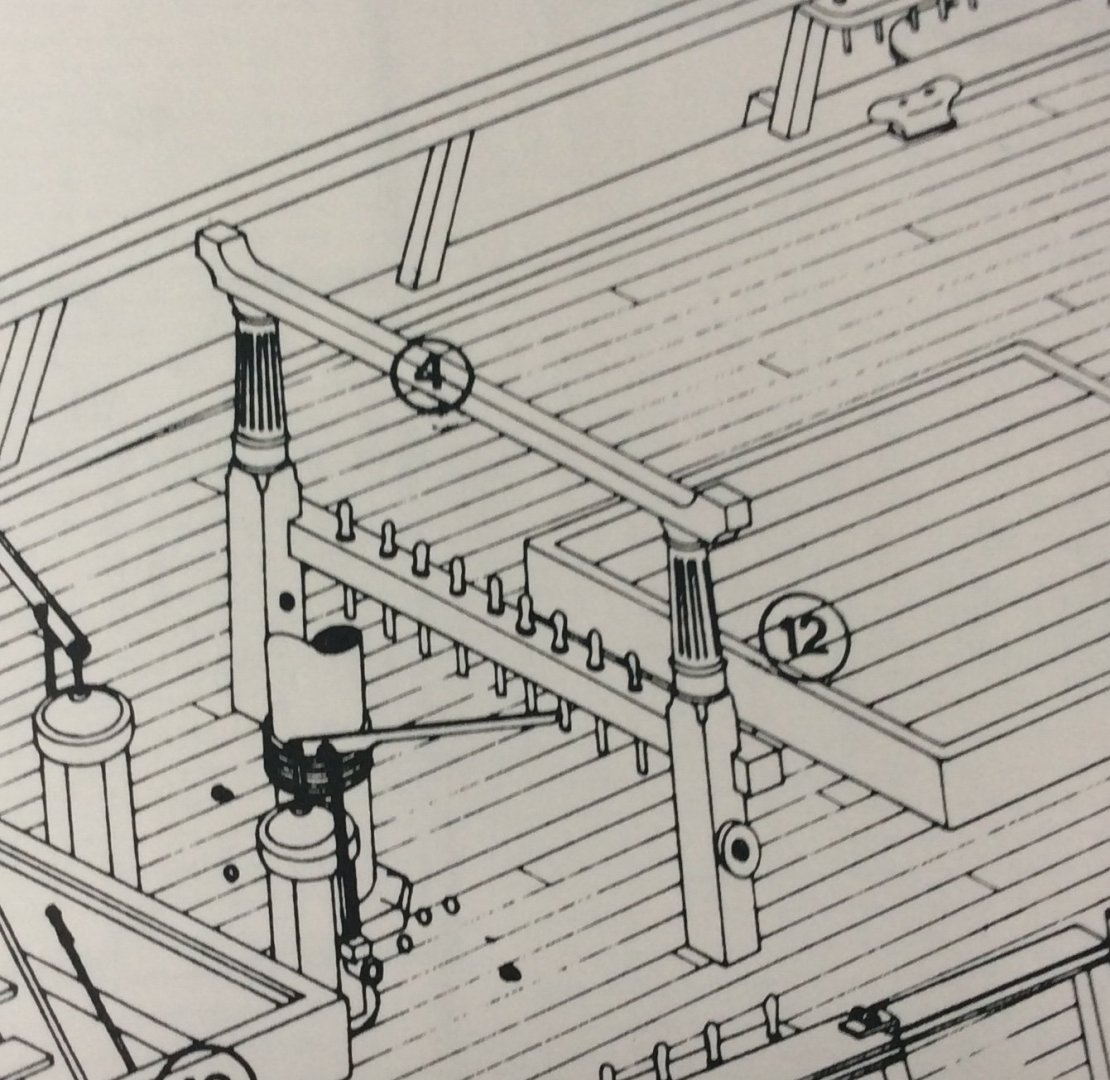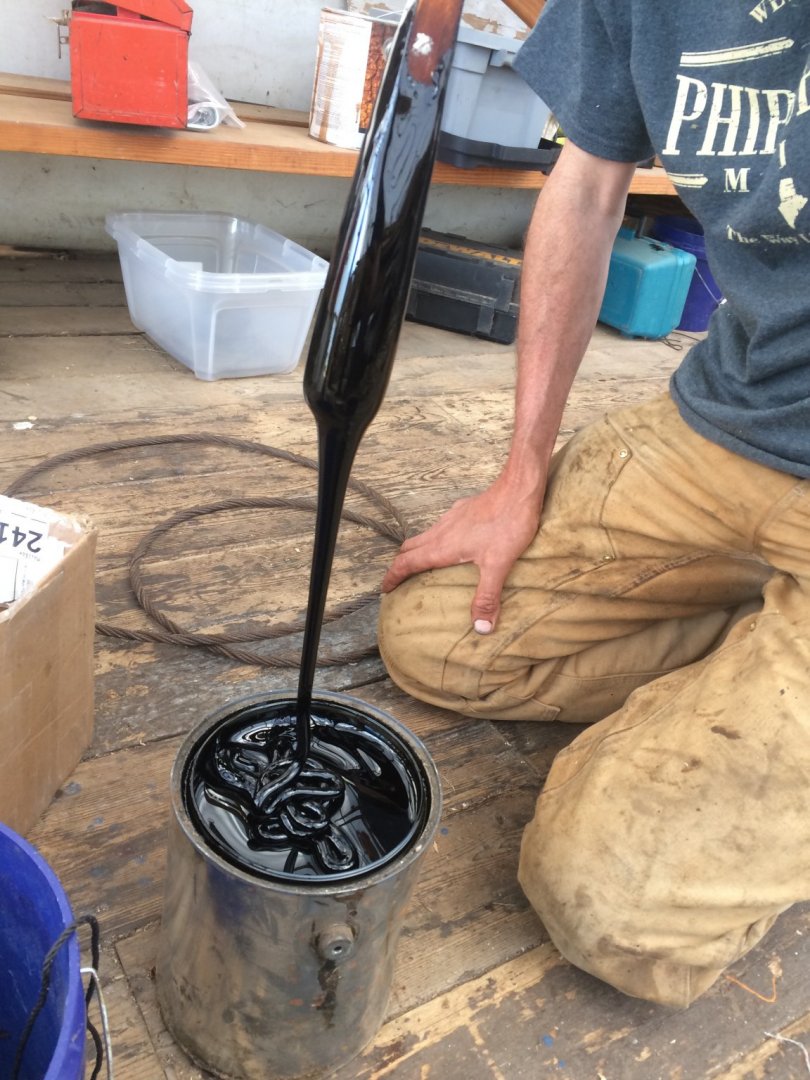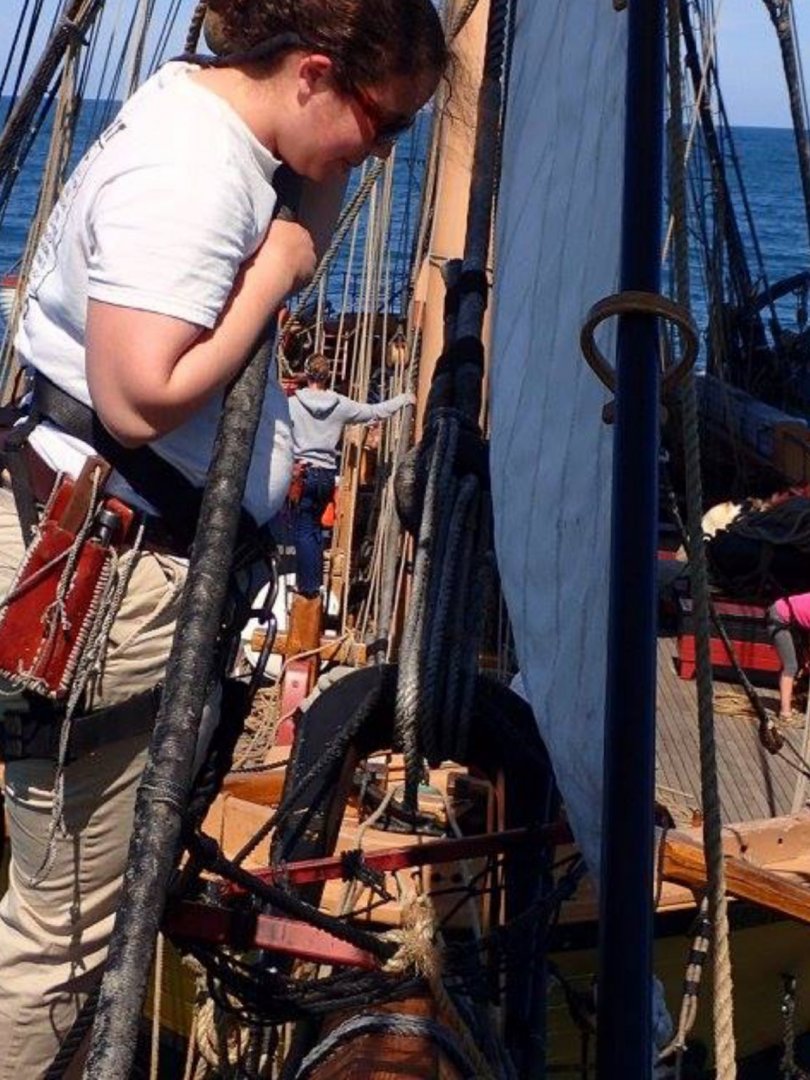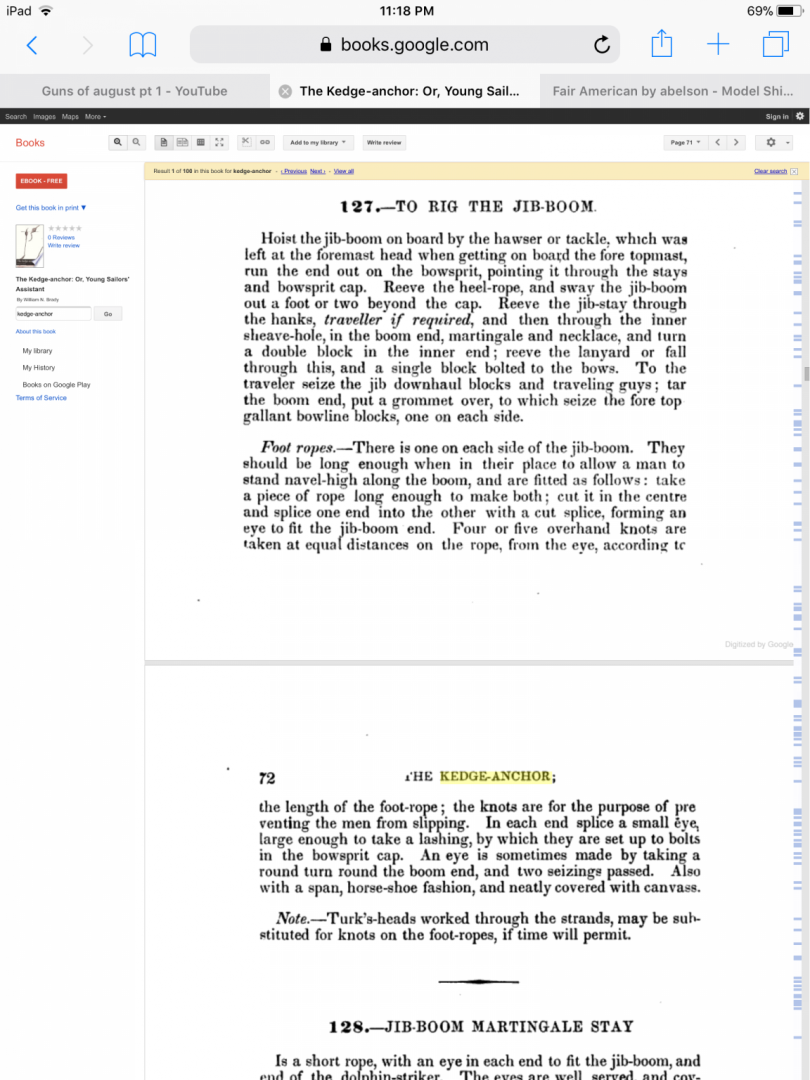
JerseyCity Frankie
-
Posts
1,338 -
Joined
-
Last visited
-
Hi Frankie,
You've obviously been studying this subject assiduously (good word Eh? - Had to look it up to make sure I'd spelt it right). Fly, being small single masted, I imagine would possibly use the pendants as running backstays when not needed for the purposes of lifting shrouds ect. Chuck Pessaro's description of Cheerful's rigging has them over the top of the shrouds at the top of the mainmast. Fly was built 40 odd years before Cheerful but I've cheated and though the hull is Fly's the rigging is mostly Cheerful's. That's a major advantage of proper scratch building since I've made all the parts except the parral beads. The attention to the very smallest detail carried out by you major builders is very intimidating to a minnow like me.
Seasons Greetings, Peter
-
-

I've been trying to get the rigging tensions in all the lines to the point where everything is square. Chuck Pessaro is right when he says in his description of Cheerful that it takes some time to get it right. You too make a good point that the masts are crowded though I look at the bigger square riggers and the complexity of their arrangements and quake. Fly is relatively simple in comparison. I'm finding one of the most difficult tasks right here at the end of the build, namely that of making and fitting the coils on top of the belaying pins and cleats. I've tried to attach a couple of photos to show what I mean. There's 11 lines going to the end of that bowsprit (the way I've rigged it anyway). Chuck's description of his build of Cheerful was of such a great help to a beginer scratch builder like me. At 75 I'm hoping to last long enough to become intermediate!
I've seen one or two contemporary paintings showing cutters going to windward with their main yard lowered to what must be no more than fifteen feet off the the deck. I suppose that would reduce the top hamper weight and also windage. But where on earth did they stow all the stunsail yards and cordage.
-

![20200125_124405[1].jpg](https://modelshipworld.com/uploads/monthly_2020_01/254327046_20200125_1244051.thumb.jpg.d55ac28cfc5fae79ae9b5d9dd992080b.jpg)
![20200125_124228[1].jpg](https://modelshipworld.com/uploads/monthly_2020_01/1193124231_20200125_1242281.thumb.jpg.d899a6f9a972874f6a74f0dd35dfd234.jpg)



